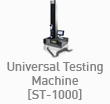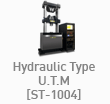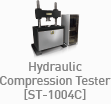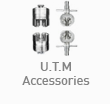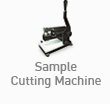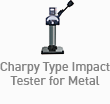Tags
- #MaterialPropertyTestingMachine
- #MaterialTestingMachine
- #CompressionTestingMachine
- #UTM
- #TensileCompressionTestingMachine
- #HydraulicUniversalTestingMachine
- #HydraulicTensileTestingMachine
- #HydraulicCompressionTestingMachine
- #TensileTestingMachine
- #UniversalMaterialTestingMachine
- #UniversalTestingMachine
- #UniversalMaterialTestingMachineManufacturer
- SOLT Co.
- #MaterialPropertyTest
- #PlasticTensileTest
- #RubberTensileTest
- TensileTest #ASTM D624
- #StrainGauge
- #VideoStrainGauge
- #EnvironmentalChamber
- #TensileGrip
- #SideActionGrip
- RollerGrip
- #FilmGrip
| [ASTM] ASTM D624 Standard Test Method for Tear Strength of Conventional Vulcanized Rubber and Thermoplastic | |
|---|---|
| Writer : 관리자(salt@light-salt.kr) Date : 24.03.11 Hit : 40 | |
| Tags : #MaterialPropertyTestingMachine,#MaterialTestingMachine,#CompressionTestingMachine,#UTM,#TensileCompressionTestingMachine,#HydraulicUniversalTestingMachine,#HydraulicTensileTestingMachine,#HydraulicCompressionTestingMachine,#TensileTestingMachine,#UniversalMaterialTestingMachine,#UniversalTestingMachine,#UniversalMaterialTestingMachineManufacturer,SOLT Co.,#MaterialPropertyTest,#PlasticTensileTest,#RubberTensileTest,TensileTest #ASTM D624,#StrainGauge,#VideoStrainGauge,#EnvironmentalChamber,#TensileGrip,#SideActionGrip,RollerGrip,#FilmGrip | |
| Attachments : | |
|
Hello this is SALT CO., LTD. a specialized manufacturer of material testing machines. Today, we'll be posting about ASTM D624, which evaluates the tensile properties of rubber and thermoplastic materials.
What is ASTM D624?
ASTM D624 stands for "Standard Test Method for Tear Strength of Conventional Vulcanized Rubber and Thermoplastic Elastomers." It's a standard test method used to measure the tear strength of conventional vulcanized rubber and thermoplastic elastomers chemically.
According to ASTM D624, specimens are made in specific shapes and sizes to measure the tensile force between specimens. This method is used to stretch specimens in any form and determine the point of rupture. Additionally, the time taken for the specimen to rupture (i.e., tensile strength) is also measured.
This method is used in the design and manufacturing processes of materials to evaluate the tensile characteristics of materials, helping assess the durability and stability of products. It finds applications in various industries such as automotive parts, rubber products, plastic products, and more.
Conditions for ASTM D624 Specimen Testing:
There are five types of specimens that can be used in this standard: A, B, C, T, and CP.
For specimens of types A, B, or C, the tear strength during stretching is defined as the maximum force divided by the specimen thickness. For specimens of types T or CP, the tear strength during stretching is the average or median of the portion of the curve generated during the stretching of the specimen, divided by the specimen thickness. Depending on the type of stress/strain curve generated by the test material, either the average or median is used.
The results of this test depend significantly on the thickness of the specimen, so it's important to accurately measure the specimen using micrometers as per ASTM D3767.
What equipment should be used for ASTM D624 testing?
SALT Co., Ltd.'s UTM capable of ASTM D624 testing
SALT Co., Ltd.'s Side Action Grips
SALT Co., Ltd.'s Roller Grips 1
SALT Co., Ltd.'s Roller Grips
The primary equipment used for ASTM D624 testing is a material testing machine or a universal testing machine (UTM). A UTM is used to measure the physical and mechanical properties of various materials. In ASTM D624 testing, these machines are used to apply load to the specimen and measure the deformation to determine tear strength.
The ASTM D638 provides standard methods for tensile testing of various plastic materials. This test is used to evaluate the mechanical properties of materials such as tensile strength, elongation at break, and modulus of elasticity.
The best type of grip for use with ASTM D624 is one that supplies consistent pressure, such as side action grips or roller grips. A crucial aspect of ASTM D624 testing is aligning the specimens vertically in the same position for each test. Since the results of the heat test can vary, it's important to eliminate as many variables as possible. Side action grips have an advantage over other grips in aiding specimen alignment. It's also important for the grip surface to mate with the specimen to facilitate visual alignment. The grip surface should have the same width as the specimen.
Salt Co., Ltd.'s all-purpose material tester provides a variety of grips, extensometers and test solutions to meet the requirements of physical property testing of various materials.
"We value our relationship with you more than just selling our products."
Salt-s@Light-Salt.kr www.light-salt.kr
|
|
| Prev | ASTM D575 Standard Test Methods for Rubber Properties in Compression. |
| Next | ISO 527-4 Tensile Testing of Plastic Composite Materials |
|
|


























